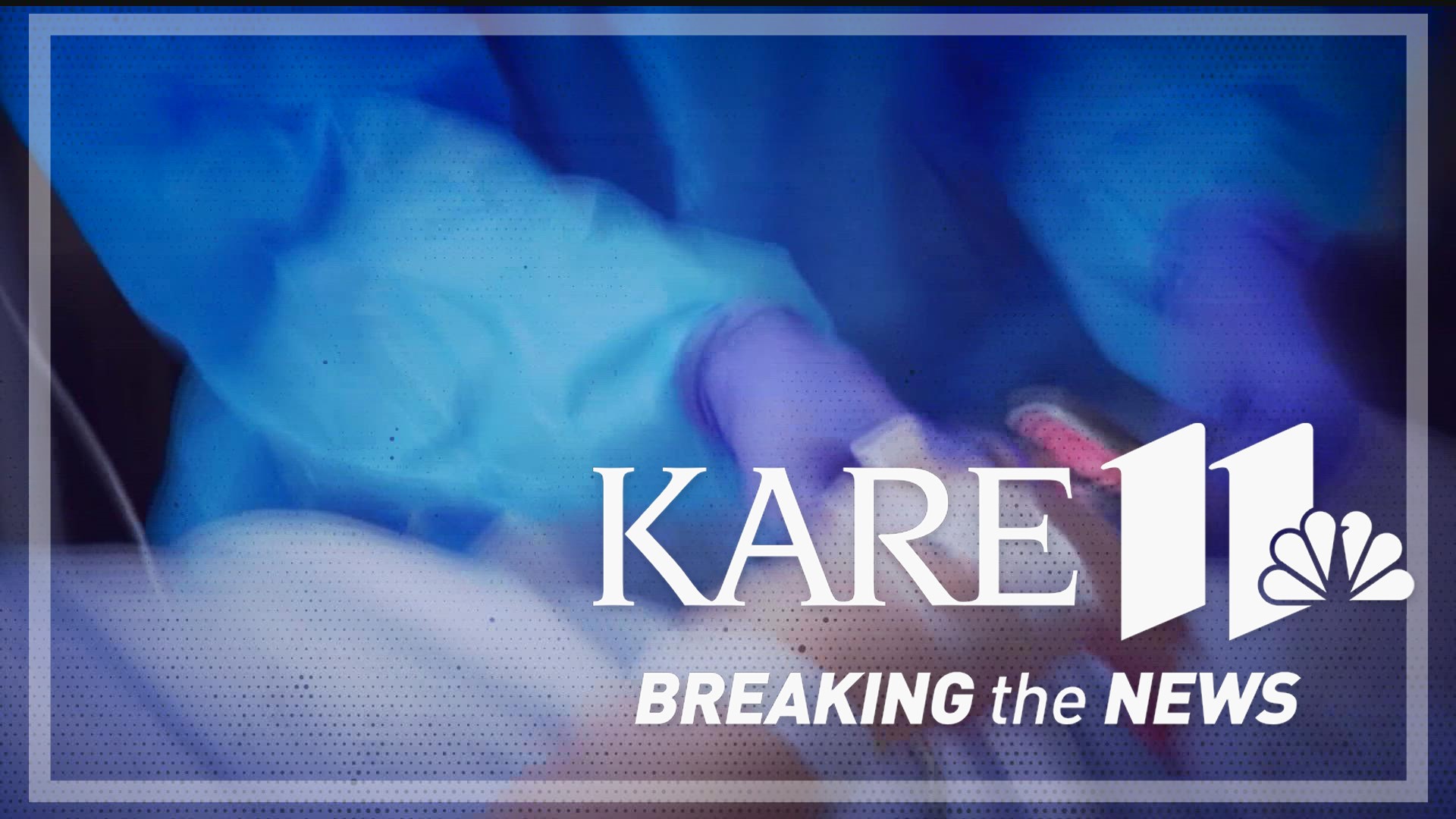ST PAUL, Minn. — A new report from the Minnesota Department of Health (MDH) says the number of adverse events and instances of patient harm jumped in 2021, a reflection of the challenges and increased demands on providers during the COVID pandemic.
Researchers say prior to 2021, the overall number of events had remained stable for several years, but during the pandemic health care organizations were forced to adapt in "real time" as hospitals and health systems took care of sicker, higher acuity patients with multiple health concerns.
MDH says the report provides an analysis of data collected from health care providers between October 7, 2020, to October 6, 2021. That data shows 508 adverse health events reported (up from 382 in 2020), resulting in 207 serious injuries and 14 deaths. The increases were in categories likely to be impacted by longer stays... namely, falls and pressure ulcers.
Among the findings:
- Increased patient complexity due to COVID-19 led to longer hospital stays and other complications arising from delays in seeking care.
- The length of stay in intensive care units more than doubled from 2.31 days in 2017 to 5.47 days in 2021. Longer hospital stays can lead to an increase in skin breakdown (pressure ulcers) by increasing the time a patient is lying down or using a medical device.
- Staff needed additional time to put on personal protective equipment before caring for a patient and potentially prevent a fall. Those staff members also had to deal with higher caseloads.
- Increased use of temporary traveling nurses and clinicians unfamiliar with Minnesota health care quality and safety road maps addressing safe skin culture and falls prevention played a factor in some adverse incidents.
“The pandemic tested our health care system and our health care providers in an unprecedented way in 2021,” said Minnesota Commissioner of Health Jan Malcolm in a released statement accompanying the report. “The pandemic also showed the value of our adverse health events reporting system. By having this system, we were able to track the effects of this extraordinary event on patient safety, and we can use these results to work with Minnesota’s providers to increase our resiliency and ability to confront future challenges.”
The Minnesota Nurses Association (MNA) was quick to jump on the results of the report, saying the numbers reflect worsening patient impacts as "the crisis of short staffing and retention continues unabated and unresolved by hospital executives."
“Minnesota patients should be able to count on hospital executives to do everything they can to solve the crisis of care and retention and to put patients before profits in our hospitals,” said Mary C. Turner, President of the Minnesota Nurses Association. “We urge hospital executives to listen to nurses and to work with us to keep nurses at the bedside with a seat at the table to address staffing, retention, and patient needs for the future.”
MNA nurses have held picketing events across the state in recent weeks requesting higher wages, benefits and a place at the table to address staffing, retention and patient care.
State health officials say the department will continue its work in 2022 to improve patient safety in Minnesota by analyzing data, convening committees to share best practices and challenges, and providing 1 on 1 consultations to hospitals and surgery centers regarding safety practices.
For more on the data gathered and analysis by researchers, check out the full MDH adverse events report.
Watch more Minnesota politics:
Watch the latest political coverage from the Land of 10,000 Lakes in our YouTube playlist:

